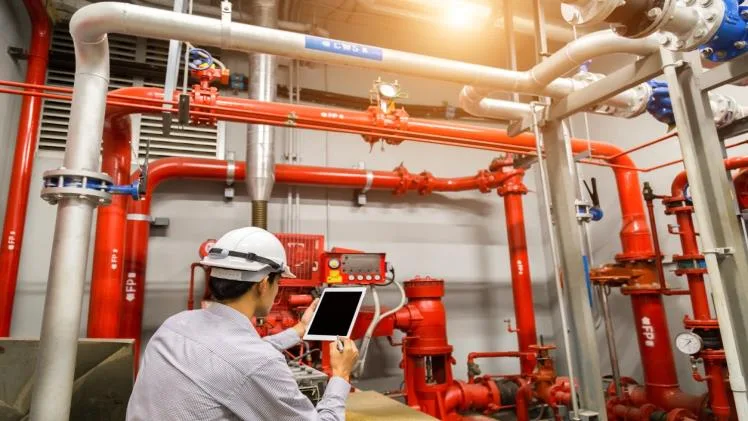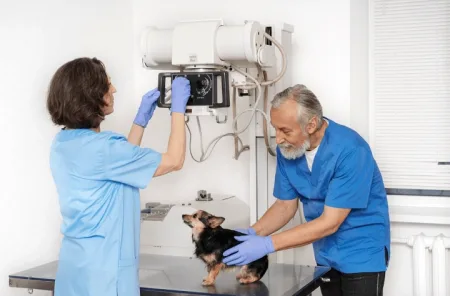No matter the industry of your facility – from poultry plants to banks – each presents unique fire risks that require special consideration when managing fire prevention efforts. Partner with a safety services expert to identify these threats and devise effective plans that will protect both you and your building from fire outbreak.
Clutter increases the risk of fire by blocking exits and obscuring vision in case of smoke, so keep workspaces clear by posting easy-to-read emergency action plans.
Here are some fire protection tips for industrial buildings:
Detectors
Industry buildings present unique fire risks that require customized protection systems to address. Fire prevention specialists specialize in designing, installing, inspecting and repairing systems tailored to suit their facility.
Ignition sources like combustible gases, oily rags and electrical malfunctions can spark industrial fires. Strict safety protocols and regular equipment maintenance can significantly lower the risk of ignition sources igniting fires in an industrial setting.
Explosion detector can also be used to monitor industrial buildings for dangerous levels of combustible gases, providing early warning of potential explosions. In places where hazardous items are kept and close to possible ignition sources, these detectors can be installed strategically around the facility.
Smoke detectors must be strategically installed within any building to provide optimal coverage, taking into account factors like ceiling height and building layout.
Working smoke alarms can assist people in quickly exiting the building in case of an emergency, while blocked doors or hallways could impede evacuation during drills or disasters, so ensure all exit routes are clear regularly, including checking that items such as storage boxes or deliveries don’t obstruct aisles or stairs.
The energy sector in Texas often necessitates the specialized skills of Houston Fire Watch Guards to oversee safety in potentially hazardous environments. Their expertise is tailored to address the unique challenges of safeguarding industrial settings within the region.
Fire Extinguishers
Fire extinguishers can be invaluable tools in combatting flames quickly and containing them to one area, keeping the situation from spreading further. Industrial facilities should have them strategically positioned where employees can quickly access them during a fire. Furthermore, their annual maintenance should include rigorous tests to make sure that everything is working as intended.
Smoking areas and ashtrays are another essential element of fire safety, reducing a common source of fire outbreaks in workplace environments where employees don’t take proper measures to ensure matches or lit cigarettes have been fully extinguished before discarding.
Make sure that all escape routes and hallways are always clear of obstructions; this is especially essential during a fire drill or actual emergency. Doors, corridors, stairways and windows must also remain easily visible even without electrical power; to meet this goal the National Fire Protection Association requires that exit signs, corridors and stairs be illuminated regularly by backup batteries.
Sprinklers
Fire sprinklers are essential in safeguarding buildings and their contents from fire damage, but only work when properly maintained and monitored. To ensure their effectiveness, regularly test them and schedule inspections with qualified inspectors to guarantee proper operation of this important safety equipment.
Combustion fires are often the result of improper storage or placement of flammable materials near heat-generating equipment, or near heat sources like lighting fixtures or heaters. To minimize such incidents, ensure all flammable material is stored safely away from ignition sources in designated storage areas and employees understand how best to handle and store this type of material.
Chemical fires pose an ongoing danger in industrial workplaces. To mitigate them, it’s critical that employees adhere to proper handling and storage protocols for all chemicals while being trained on how to use and maintain equipment used to handle those substances.
Never overlook the fire risk posed by disorganized workspaces. Encourage employees to keep things neat and orderly and minimize clutter. Also be sure that escape routes are clearly displayed throughout your building, and all employees understand their responsibilities regarding match and cigarette butt disposal.
Emergency Lighting
Industrial buildings contain large quantities of machinery which poses a fire risk, so maintaining these machines properly and ensuring all employees follow safety procedures are essential in preventing careless behavior that could ignite a blaze.
Clutter can also pose a fire risk. Working in an environment filled with paper, trash and empty boxes increases the speed at which a fire spreads, so it’s crucial that items be stored in specific places and regular cleaning schedules implemented to enforce standards for waste disposal.
Emergency lighting is an integral component of effective fire protection for industrial buildings. Ensuring these lights are installed, tested, and maintained according to code is crucial to keeping building occupants safe during an evacuation. To further ensure building safety during an evacuation plan creation and implementation as well as regularly scheduled fire drills.



